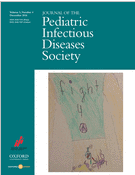November 21, 2016

The Question: CDDEP researchers and collaborators have found that infections due to multidrug-resistant and carbapenem-resistant strains of Pseudomonas aeruginosa increased dramatically between 1999 and 2012.
The study relied on samples from microbiology laboratories, collected over 12 years from children from 1 to 17 years of age, from outpatient, inpatient, intensive care unit, and long-term care settings. The data were from The Surveillance Network (TSN), which collected clinical results from microbiology laboratories serving approximately 300 hospitals throughout the country, through 2012, when it ceased operation.
What We Found: Researchers plotted the prevalence of multidrug-resistant and carbapenem-resistant P. aeruginosa samples over time, finding that the crude proportion of MDR P. aeruginosa increased from 15.4 percent in 1999 to 26 percent in 2012 and the proportion of CR P. aeruginosa increased from 9.4 percent in 1999 to 20 percent in 2012. The proportion of both MDR and CR P. aeruginosa increased each year by 4 percent. The results of the study underscore the need for aggressive prevention strategies, including bacterial surveillance and antimicrobial stewardship programs in pediatric settings.
Why It Matters: According to co-author and CDDEP Fellow Sumanth Gandra, “Pseudomonas infections are quickly becoming resistant to our last line of defense, the carbapenems. As these infections become more difficult to treat, they will bring significantly higher costs for hospitals and communities, and more importantly, increase the risk of death.”

